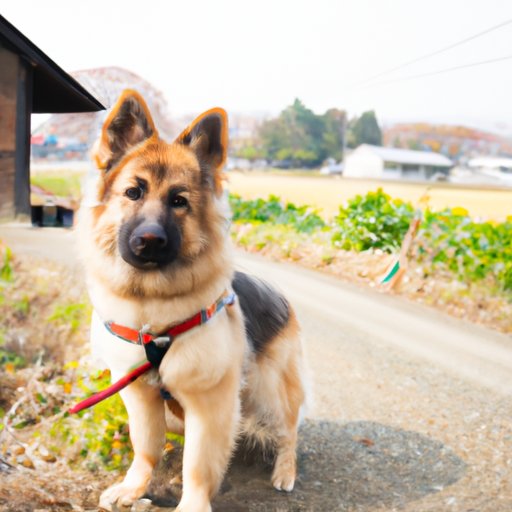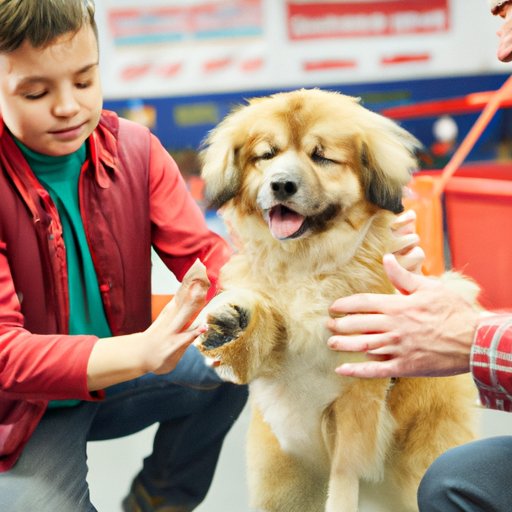
How to Help a Dog with Separation Anxiety
Separation anxiety in dogs can be a challenging and distressing issue for both the pet and their owner. It’s estimated that up to 20% of dogs suffer from separation anxiety, with symptoms ranging from mild whining and pacing to destructive behaviors such as chewing, digging, and urinating indoors. However, with the right guidance and support, pet owners can help their dogs manage their anxiety and feel more comfortable and relaxed when left alone. In this article, we’ll explore practical tips and techniques for helping dogs cope with separation anxiety.
What is Separation Anxiety in Dogs?
Separation anxiety is a condition in which dogs become anxious, distressed, or panicked when their owner leaves the house or is not in their immediate vicinity. This can result in undesirable behaviors that are often a sign of emotional distress. Some of the most common symptoms of separation anxiety include the following:
- Excessive barking or whining
- Destructive behavior, such as chewing or digging
- Urinating or defecating indoors
- Pacing or restlessness
- Howling or crying
- Attempting to escape or break out of the house
It’s important to recognize that these behaviors can also be caused by other factors such as boredom, lack of exercise, or medical issues. Before assuming that the dog has separation anxiety, it’s essential to rule out any other potential causes for these behaviors.
General Tips for Helping Dogs Cope with Separation Anxiety
There are several things that pet owners can do to help their dogs feel more at ease when left alone.
Gradually Increasing the Amount of Time the Dog is Left Alone
One of the most critical things that pet owners can do is to gradually increase the amount of time that they leave their dog alone. This can help the dog become accustomed to being alone and gradually build confidence and self-assurance. Start by leaving the dog alone for just a few minutes at a time, gradually increasing the time as the dog becomes more comfortable. It’s essential to reward the dog for staying calm and relaxed when left alone.
Providing Plenty of Toys and Distractions
Keeping a variety of toys and chewables available can help dogs feel more comfortable and provide a way to pass the time when left alone. Puzzle toys and food-dispensing toys can also be a great way to provide stimulation and keep the dog entertained.
Establishing a Routine for the Dog
Dogs thrive on routine and predictability. Establishing a consistent daily routine can help reduce anxiety and provide a sense of structure for the dog. Creating a predictable schedule of feeding, exercise, play, and rest can help the dog feel more secure and can also make it easier for the owner to plan departures.
Training Exercises for Dogs with Separation Anxiety
Training exercises can also be used to help dogs with separation anxiety. Teaching new behaviors can help the dog feel more comfortable and confident when left alone.
Teaching New Behaviors such as “Stay” or “Leave It”
Teaching a dog to stay in one place or to leave something alone can be useful when trying to help them feel more at ease when left alone. Start by teaching the dog to “stay” for short periods when in the same room, gradually increasing the duration and then moving to a different room before finally moving outside of the house. Similarly, teaching the dog to “leave it” can be a helpful way to prevent destructive behaviors or alleviate anxiety when objects are around.
Helping the Dog feel more Confident and Secure when Left Alone
‘Counter-conditioning’ can also help dogs feel more confident and secure when left alone. Counter-conditioning involves pairing something positive, like food, with a situation or activity that the dog finds stressful. This can help the dog form positive associations with the activity or situation by reducing the fear or anxiety caused by it.
Creating a Calming Environment
The environment that the dog is left in can also have a significant impact on their anxiety levels. Here are some tips on how to create a calming environment for the dog:
Keeping the Environment Calm and Quiet
Keeping the environment as calm and quiet as possible can help alleviate anxiety. Closing windows and doors can help block out noise from outside, and it can be beneficial to play calming music or radio broadcasts to drown out noise further.
Making the Environment Comfortable
Surrounding the dog with familiar objects, such as a comfortable bed, favorite toys, or clothing that smells of the owner can help the dog feel more secure in their environment.
Using Music or Aromatherapy
Experiments have shown that playing calming music or using aromatherapy can help reduce anxiety in dogs. Calming music can be found on various streaming platforms, while several types of aroma diffusers are also available which provide different types of fragrances to calm down the dogs’ mood.

Tailored Advice for Specific Breeds
Some dog breeds are more prone to separation anxiety than others. It’s essential to approach each breed differently, depending on their character and instincts. Tailored advice for specific breeds can be helpful in identifying particular training techniques or behavioral strategies that may be particularly effective.
Greyhounds
Greyhounds are known to be needy dogs, so setting up a consistent daily routine with them can help them feel more secure when left alone. Having another dog or pet around can also help, as Greyhounds are pack animals that crave consistent companionship.
German Shepherds
German Shepherds are very loyal dogs who bond tightly with their owners. They can become destructive when left alone for extended periods, so gradually increasing the duration of their alone time can help. Training them in a new behavior can also help them feel more confident and secure.
Bichon Frise
Bichon Frises are small and typically well-suited to an indoor living environment. Reducing their dependency can be hard, so gradually increasing their alone time can help alleviate this. Using a favorite toy or chewable as a distraction can also help.
Proactive Measures to Prevent Separation Anxiety
There are also a few things that pet owners can do proactively to prevent separation anxiety from developing in the first place.
Proper Socialization when the Dog is Young
Socialization is essential to helping a dog feel more at ease in a range of different situations. Start socializing your dog when they are young by exposing them to new sounds, people, and other animals. Doing this can help the dog become more comfortable with various situations, which in turn can help prevent separation anxiety from developing.
Approach Routine Changes in a Way that Minimizes Stress for the Dog
Changes to a dog’s routine can cause stress and anxiety. When making changes, such as moving to a new house or bringing a new member of the family into the household, it’s essential to make the transitions as gradual and comfortable as possible for the dog. Consulting a veterinarian or a dog behavioral specialist can help ensure that optimal outcomes are achieved.
Medication and Other Interventions
In some instances, medication may be needed to help manage a dog’s separation anxiety. If your dog is showing signs of distress or destructive behavior despite training and other interventions, it may be time to consider medication. Before embarking on any medication, however, it is imperative to consult with a veterinarian who can recommend the right medication based on the dog’s health status and needs.
Conclusion
Separation anxiety is a challenging condition, but with patience, a consistent routine, and a balanced approach, it can be managed. It’s essential to recognize that every dog is unique and may require a tailored approach to manage their anxiety. By using the tips and strategies outlined above, pet owners can help their dogs feel more comfortable and secure when left alone.




